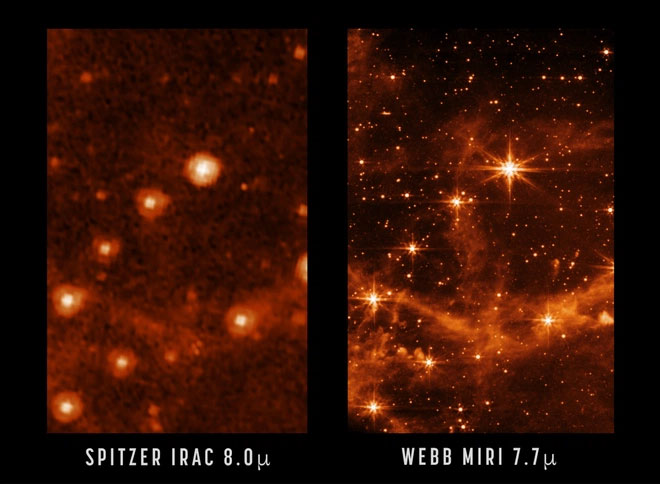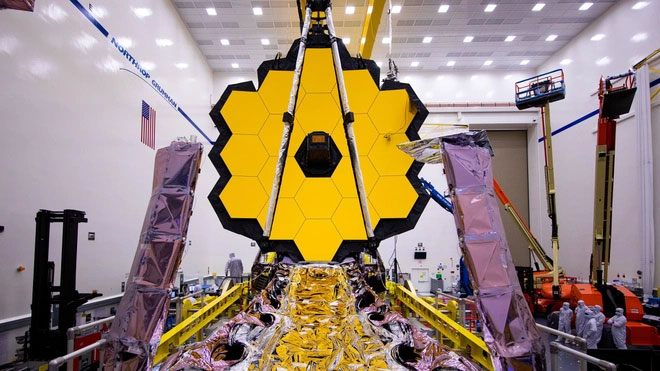The experimental images from the James Webb Space Telescope allow us to see many new details about a galaxy located approximately 163,000 light-years from Earth.
On May 9, the National Aeronautics and Space Administration (NASA) shared the latest images captured by the James Webb Space Telescope, showcasing the infrared light of the Large Magellanic Cloud emitted from polycyclic aromatic hydrocarbons (PAHs). These organic molecules are considered essential components for the emergence of life.
According to CNN, the images sent back by James Webb are part of its final testing phase, which includes deploying the Mid-Infrared Instrument (MIRI) before it officially begins operations later this year. To utilize this instrument, James Webb must operate at extremely cold temperatures (below -222 degrees Celsius).

James Webb’s infrared image compared to the Spitzer Telescope. (Photo: ESA).
“This is the sharpest infrared image ever taken by a space telescope,” shared Michael McElwain, a scientist at NASA’s Goddard Space Flight Center.
As NASA’s most powerful telescope, James Webb can observe the atmospheres of exoplanets and gather data on various galaxies through infrared light that is invisible to the human eye.
The image was released by NASA after the 18K gold-plated mirror of James Webb was successfully fine-tuned. According to CNN, James Webb features a mirror that is 6.5 meters wide, allowing it to collect more light from celestial objects. The more light it gathers, the more details the telescope can observe.
NASA also compared images from James Webb with those captured by the Spitzer Telescope, showing a marked improvement in detail and sharpness. Before being “retired” in January 2020, Spitzer was the first telescope capable of capturing high-resolution images of the universe using near- and mid-infrared light. The massive mirror of James Webb allows for capturing more details compared to Spitzer.
Astronomers studying galaxies noted that the images of the Large Magellanic Cloud from James Webb reveal unprecedented details about interstellar gas.
“We have about 1,000 activities planned for operation, and only about 200 activities remain to be completed,” McElwain stated about James Webb’s testing process. The telescope’s instruments are undergoing final checks and calibrations before the ground control team evaluates them, preparing for future missions.

James Webb is regarded as the most powerful space telescope ever built. (Photo: NASA).
James Webb has been in development since 2004. Since then, thousands of scientists, technicians, and engineers from 14 countries have dedicated over 40 million hours to building the telescope. Each instrument on James Webb has about 4-5 modes, including tracking target motion for scientists wanting to study objects on the icy surfaces of the Solar System.
Klaus Pontoppidan, a scientist at the Space Telescope Science Institute in Baltimore, indicated that the first images of the universe from James Webb, known as Early Release Observations (ERO), are expected to be released in mid-July. These will mark the beginning of a new era of cosmic observation for NASA.

















































